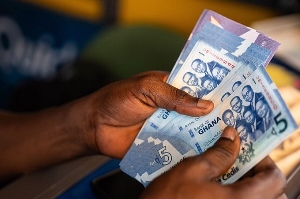Two months after the Uganda National Oil Company (Unoc) took over as the sole importer and supplier of petroleum products into the country, pump prices remained high, signalling more problems associated with the supply lines.
There has been a slight drop in average pump prices, attributed partly to the direct importation of fuel products yielding reduced logistics costs. But the change is pegged to other factors, mainly the appreciation of the Ugandan shilling against the US dollar, and the lower global price of crude.
According to Trading Economics, Brent crude on Thursday sold at $77.6 before rebounding past $80 a barrel, but is expected to trade at $77.42 by the end of this quarter, down from $85 in June, when Unoc initially submitted orders for the first consignment of its fuel imports.
Despite this, Uganda continues to feel pump price headaches as the dominant firms in the market are still comfortably perched above the government’s desired upper limit of $ 5,000 ($1.34) for a litre of petrol or diesel, in a competitive downstream market.
Issa Kietoo, marketing manager at Stabex Uganda, one of the dealers, says oil marketing companies are now saving Ush100-Ush150 ($0.027-$0.040) on each litre of fuel landed in the country after the elimination of Kenya middlemen and the strengthening of the shilling against the dollar.
But the current prices are not where the government envisaged, as the marketers still foot the same transportation and logistics costs as before. In addition, Kenya imposed a higher bond fee of $40 million—up from $15 million—on Unoc’s fuel imports, which created a new cost in the value chain.
“The only thing that has changed is the supplier; everything else—the logistics, the transport, the routes—is the same,” says Abdulhakim Hussein, general manager of Nile Energy Ltd.
Yasin Nasser, country manager of Moil, another dealer, says they still operate the same cost structure as under the previous supply regime to run their retail outlets or commercial customer obligations, adding that only the market giants with economies of scale can gauge immediate changes in the pump price under the Unoc monopoly.
Energy Minister Ruth Nankabirwa, after receiving the first vessel carrying Unoc fuel imports on July 2, gave assurances of better times.
“This is a milestone after more than 12 months of negotiations between Kenya and Uganda. We can assure Ugandans of cheaper fuel in the future and quick supply since Unoc has demonstrated capacity in delivering petroleum products to Uganda,” she said.
As it moved to end the regime of Kenyan companies as the suppliers of fuel imports, the Ugandan government last year introduced the Petroleum Supply (Amendment) Bill 2023, amending 2003 legislation to give Unoc a monopoly over fuel imports and supply.
This law was to ensure the security of supply, improve petroleum product stock-holding levels within the country, and contribute to the competitiveness of consumer and retail pump prices.
The jury is still out on whether the new regime will meet these objectives.
Like most East African economies, Uganda was grappling with fuel import-related shocks, which triggered high pump prices and caused an uproar when the country registered a record 21 percent rise in the pump price of petrol from Ush4,590 ($1.23) on December 20, 2021, to Ush5,561 ($1.49) per litre in 2023.
Diesel prices rose about 18 percent, from Rs 4,230 ($1.13) to Rs 4,992 ($1.34) per litre. At the peak of the fuel import crisis in 2021, as prices skyrocketed, Ms. Nankabirwa said the government would impose a price ceiling for petroleum products to retail at not more than US$5,000 ($1.34) a litre.
A survey by The EastAfrican in Kampala metropolitan fuel stations shows a slight drop in the pump prices in the city centre and some suburbs, with motorists now saving an average of Ush435 ($0.11) per litre of petrol and Ush161 ($0.04) per litre of diesel, compared with the December 2023 pricing.
But the market has defied the government’s expectation that prices would drop to under Ush5,000 ($1.34) in the first month of Unoc’s monopoly, which Ms. Nankabirwa blames on two dominant oil companies that she declined to name.
As of August 29, most outlets of market leaders TotalEnergies and Shell were selling petrol above Ush5,330 ($1.44) and Ush5,230 ($1.42) per liter, respectively, and Ush5,260 ($1.42) per litre of diesel at TotalEnergies pump stations, and Ush4,850 ($1.31) at Shell.
Other major dealers, Mogas, Rubis, and Petrocity, were also selling petrol at over US$5,000 a litre.
In a previous report, the Economic Policy Research Centre (EPRC) accused Shell and Total of collusion to set higher prices, as they command the largest market share, an allegation Anthony Ogalo, general manager of the Sustainable Energies and Petroleum Association, denies.
Mr. Ogalo said that a combination of quality services and high operating costs due to the countrywide spread of TotalEnergies and Shell compels the two to sell their products above the prices of other oil dealers in the market.
EPRC suggests the need for the government to regulate and enact legislation to prohibit selling fuel above the government-regulated price, especially during supply shocks.
Despite hitches in the first months, the Energy Minister remains optimistic that the policy shift to eliminate middlemen by creating a monopoly will shortly see oil marketers save on logistics costs.
“We have shortened the route internally,” Minister Nankabirwa said. “When Kenya imported on our behalf, that was a longer route in terms of the financial implications. Once you do away with those companies, a shorter route from Vitol to Unoc to OMCs, and the OMCs should reflect this in their pump prices.”
She argues that even in times when world crude oil prices increase, Uganda will not be as vulnerable as it used to be when it depended on Kenyan dealers for fuel supplies.
Industry leaders initially hailed the government’s decision to amend the Petroleum Supply Act to hand Unoc a monopoly, stating that if Uganda cut off Kenyan intermediaries, the pump price would come down—but with a provision that Unoc must stick to negotiated premiums and push them lower.
In March 2023, Kenya ditched the open tender system and entered a government-to-government (G2G) arrangement with Gulf companies to supply fuel in the region at high premiums of $118 per metric tonne for Automotive Gas Oil or diesel and $97.5 for Premium Motor Spirit or petrol.
Through a partnership with Vitol Bahrain, a subsidiary of Swiss commodity trading firm Vitol, Unoc was expected to leapfrog the Kenyan arrangement and eliminate the nearly $100 million that Ugandan OMCs paid to Kenyan dealers and the government.
But industry analysts say the Unoc deal only handed to Vitol what Kenyan middlemen previously took as intermediary suppliers between the Gulf refineries and Ugandan OMCs.
Uganda imports an average of 2.5 billion litres of petroleum annually, valued at $2 billion, though a sizeable portion of the bill comprises inflated fees by middlemen.
"A whole country buying from middlemen in Kenya or anywhere else! Amazing but true,” Museveni said in a statement on his official handle on social media platform X. “Why not buy from the refineries abroad and transport through Kenya and Tanzania, cutting out the cost created by middlemen? Those involved were not bothered by these issues.”
Uganda is expected to save substantially. The $118 the country uses on a tonne of diesel is expected to reduce to $83 when dealing with bulk suppliers—a variation of 42.1 percent.
For petrol, Kenyan middlemen offered Uganda $97.5 per tonne, compared with $61.5 by bulk suppliers and refineries, meaning that the country paid an extra 58.53 percent to the brokers.
Museveni said that Uganda purchased a tonne of kerosene from middlemen at $114, against $79 quoted by bulk suppliers and refineries— meaning that the pricing of the commodity had been inflated by 44.3 percent.
Africa News of Saturday, 31 August 2024
Source: theeastafrican.co.ke

















